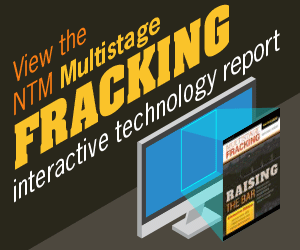DNV GL Led Industry Collaboration To Develop Design Guidelines For Pipeline Concrete Coating
- Category: Production & Completions
- Published: 2015-Feb-12
With submarine pipelines increasing in diameter and extending into deeper waters and more challenging environments, design requirements for concrete weight coating do often not meet current needs. The result is inconsistent safety margins and potentially expensive overdesign and stringent installation requirements. DNV GL has now kicked off the first phase of a joint industry project (JIP) to address these issues and improve the understanding of pipeline concrete behaviour.
The aim is to develop a design guideline that complements current pipeline codes and standards. The JIP is still open for participants.
Concrete weight coating is widely used to protect submarine pipelines and ensure stability on the seabed. The current design approach for pipeline concrete coating is primarily based on simple and general design requirements.
The method has proven reasonably reliable for most traditional pipelines, but does not capture all potential failure modes. In recent times, several cases of concrete coating damage have been observed during installation and operation phases, with varying degrees of severity and potential risk.
The JIP is relevant for pipeline operators, designers, installation contractors and coating contractors.
“Many industry players have expressed a wish for a more thorough understanding of the behaviour of pipeline concrete weight coating during the installation and operational phases. They expect more specific acceptance criteria, a less conservative approach to the strain in the concrete coating subject to bending and a more accurate estimate of the strain concentration factor at the field joints. These are challenging issues which we want to explore in depth with this joint industry project,” says Nguyen Thi Bich Ngoc, JIP project manager. “Current participants include Petrobras, Saipem, Bredero Shaw, SVAP and Wasco Coatings, and we still welcome new participants,” she adds.
Preliminary studies conducted by DNV GL suggest that in-depth knowledge about the contribution of and interaction among several factors is needed to understand pipeline concrete coating behaviour (e.g. the shear transfer capacity, coating thickness, strength, fabrication method, type, location, spacing, percentage steel reinforcement and loads). It is important that these factors are validated against recent test results and combined with knowledge gained from industry experience before being incorporated into pipeline codes and standards.
Richard Harrison, engineering manager (Installation Analysis & Sealine Design) in Saipem Ltd, says: “Saipem has continuously upgraded its fleet of pipe-laying vessels and developed new techniques for installing concrete-coated pipelines. Although we have been pushing the boundaries of our knowledge, we have been constrained by the lack of guidance that is available for installing these types of pipelines. Saipem welcomes this initiative and anticipates that such collaboration will directly extend the ability and confidence of the industry to deal with the increasingly challenging pipelines that will need to be designed and installed in the future.”
The JIP will lead to a rational design approach based on a quantitative understanding of concrete-coating behaviour in response to external loads and the interaction between the important mechanisms and factors that influence this behaviour. The first phase of the JIP will develop a design approach for pipeline concrete coating and is due for completion by December 2015. The second phase is for an experimental validation of the design approach and development of a design guideline for pipeline concrete coating. The JIP is expected to be completed by the end of 2016.
As of 12 September 2013, DNV and GL have merged to form DNV GL. Driven by its purpose of safeguarding life, property and the environment, DNV GL enables organizations to advance the safety and sustainability of their business. It provides classification and technical assurance along with software and independent expert advisory services to the maritime, oil and gas and energy industries. It also provides certification services to customers across a wide range of industries. With origins stretching back to 1864, its reach today is global. Operating in more than 100 countries, its 17,000 professionals are dedicated to helping our customers make the world safer, smarter and greener.
In the oil and gas industry, GL Noble Denton and DNV’s Oil & Gas business have joined forces to enable safe, reliable and enhanced performance in projects and operations. It provides integrated services in: technical assurance; marine assurance and advisory; risk management advisory and offshore classification. Its 5,500 people combine industry expertise, multi-disciplinary skills and innovation to solve complex challenges for its customers. Together with our partners, we drive the industry forward by developing best practices and standards across the asset lifecycle.





 Daily News Archive
Daily News Archive 

